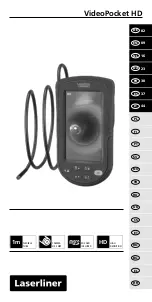
28
Operating instructions CellaTemp PK / PKF / PKL xx
15 Theory of Non-Contact Temperature Measurements
All materials radiate thermal energy in all states of aggregation above absolute
zero� This radiation is mainly caused by atomic or molecular oscillations�
This temperature radiation is only a limited sector within the total electromagnetic
radiation spectrum� It extends from the visible range starting at wavelengths
of approx. 0.5 μm to the infrared range with wavelenghs of more than 40 μm.
Radiation pyrometers detect infrared radiation for non-contact temperature
measurement�
15.1 Advantages of Non-Contact Temperature Measurement
• Non-contact temperature detection means cost-effective temperature
measurement because this technique only requires a single in-vestment in an
instrument without any follow-up costs for consumables such as thermocou-
ples�
• This method enables temperature detection of moving objects - quick tempe-
rature measurements within milliseconds - for example at automatic welding
processes�
• Small objects with medium and high temperatures can also be easily and
accurately measured�
• When measuring materials with low specific heat, a non-contact method does
not induce heat loss which would distort the temperature reading (as is the
case with contact temperature probes)� Non-contact temperature detection
is ideal with corrosive molten materials for which the use of thermocouples is
hardly feasible�
• Last but not least it is also possible to measure the temperature of voltage-car-
rying objects�
15.2 Measurements at Black Bodies (Cavity Radiators)
A black body or a black radiator is used to calibrate radiation pyrome-ters� This
black body is designed in a way that its radiation does not
depend on material characteristics, but only on its temperature� A black body emits
at any wavelength the maximum energy possible for the specific temperature� Real
bodies do not have this ability� In other words, a black body completely absorbs
the radiation without reflection or transmission losses� The spectral emissivity
















































